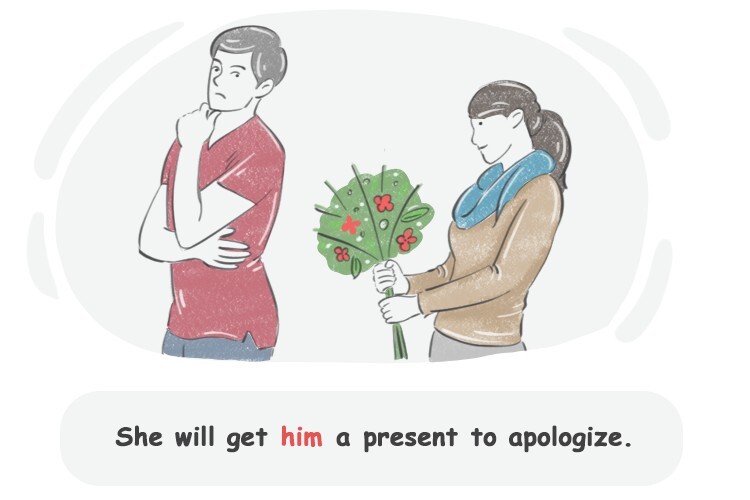Indirect Objects
As you know, there are three different groups of objects in English. This article is about indirect objects and their functions.

What Are Indirect Objects?
An indirect object is a noun, pronoun, or noun phrase that indicates to or for whom or what an action is performed or to whom or for whom or what something is given or communicated. In other words, the indirect object tells us to or for whom or what the direct object is intended.
Indirect Objects vs. Direct Objects?
'Direct objects' do not need indirect objects to have a complete meaning. As a result, if there is only one object in a sentence, it is a 'direct object'. If a sentence has two objects, the one that receives the action of the verb is the direct object and the one that receives the direct object is the indirect object.
I called
In this sentence, the pronoun 'him' is the only object of the sentence, so it is a 'direct object.'
I gave
Here, 'the keys' receives the action of the verb and 'him' receives the keys so, the keys is the 'direct object' and the pronoun him is the 'indirect object.'
Indirect Objects and Verbs
Any verb that can take an object is a 'transitive' verb, but verbs that can take both a direct object and an indirect object are called 'ditransitive' verbs. Here are the most common ditransitive verbs in English:
- give
- send
- lend
- lease
- rent
- hire
- sell
- write
- tell
- buy
- make
You were supposed to
He did not
Warning!
Linking verbs cannot take objects.
I seem Tommy
Indirect Objects: Position in a Sentence
Subject + ditransitive verb +
He wrote
Sara did
I volunteered to send
Warning
You cannot use adverbial adjuncts after the indirect object.
I lent Tom
How to Find the Indirect Objects?
Check out the examples for more clarification:
I am sorry to give
Here the pronoun 'you' is used after the ditransitive verb 'give' and precedes the direct object 'time.'
I'll send
Indirect Objects or Prepositional Phrases
'Indirect objects' can be placed at the end of the sentence following the prepositions 'to' and 'for.' In this case, they make a prepositional phrase that is used as a complement, not as an indirect object. Here are a few examples:
I have made a cup of coffee
Instead of 'I have made you a cup of coffee'
Marco handed the constitutions
Indirect and Direct Objects: Usage
Usually, indirect objects are animals or people to or for whom the action of the verb is performed. Direct objects, on the other hand, are usually non-living things that receive the action of the verb. Check out the table:
| Living | Not living | |
|---|---|---|
| Direct objects |
|
✓ |
| Indirect objects | ✓ |
|
She will get
The kind mother reads
Review
Nouns, noun phrases, or pronouns that are used after ditransitive verbs and before direct objects are called indirect objects. They are not necessary to be used for all transitive verbs, but they complete the meaning of the sentence.
